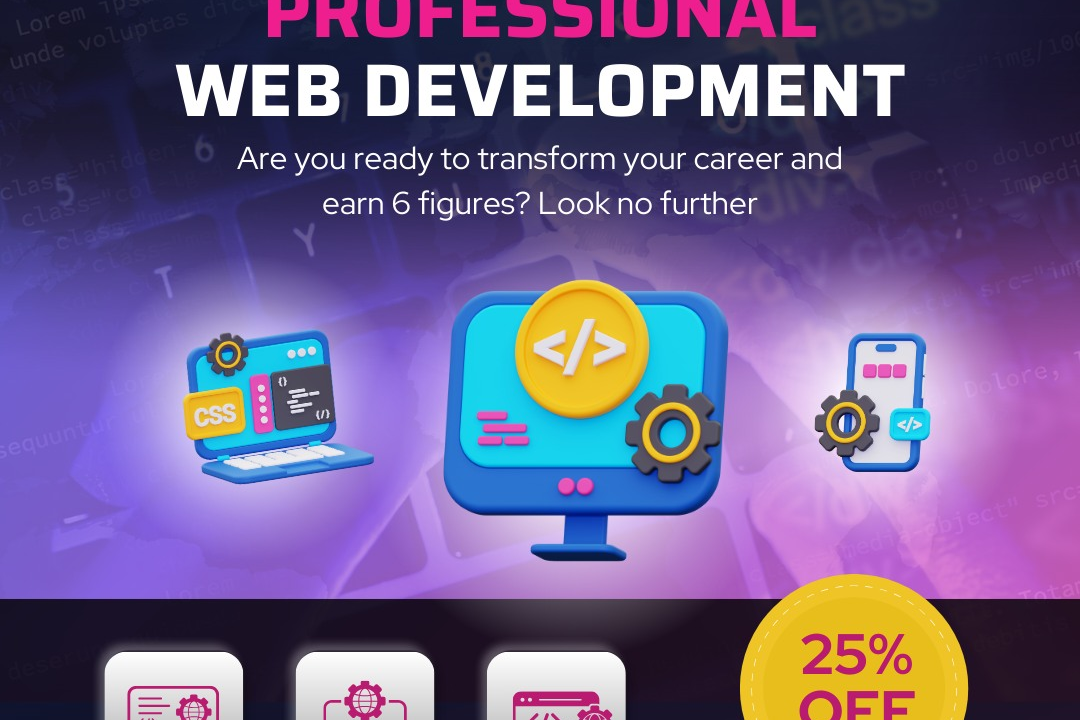Laravel 5 Interview Questions And Answers
Laravel 5 In-Depth Interview Questions and Expected Responses
Laravel 5 Interview Questions And Answers
Laravel 5 is a popular PHP framework known for its robust features, elegant syntax, and extensive ecosystem. During interviews, questions related to Laravel often focus on its core concepts, such as routing, controllers, middleware, and Eloquent ORM. Interviewers may also inquire about advanced topics like dependency injection, service providers, and facades. Understanding the use cases and benefits of Laravel 5, such as its ability to streamline web application development, maintain code organization, and enhance developer productivity, is crucial for successful answers.
To Download Our Brochure: https://www.justacademy.co/download-brochure-for-free
Message us for more information: +91 9987184296
1 - What is Eloquent and how does it simplify database interaction?
Eloquent is an ORM (Object Relational Mapping) tool that provides a simple and expressive syntax for interacting with the database. It automatically maps database tables to PHP classes and vice versa, allowing developers to manipulate database records as objects.
2) Explain the purpose of the `$fillable` property in Eloquent models.
The `$fillable` property specifies which attributes of the model can be mass assigned from external sources (such as HTTP request inputs). By default, all attributes are protected and cannot be mass assigned for security reasons.
3) What is the difference between eager and lazy loading of relationships in Eloquent?
Eager loading fetches related models immediately when the parent model is retrieved. Lazy loading, on the other hand, only fetches related models when they are explicitly accessed.
4) How does Laravel handle validation of user input?
Laravel provides a validation facade that allows developers to define custom validation rules and easily validate user input. Validation rules can be specified in the controller or in a separate validator class.
5) What is the Laravel Blade templating engine and how is it used?
Blade is a templating engine that allows developers to quickly and easily generate HTML views. Blade templates use a simple and expressive syntax to render data and control flow.
6) How does Laravel handle authentication and authorization?
Laravel provides a robust authentication and authorization system. It includes a built in user model, password hashing, session management, and middleware for checking user permissions and authenticating requests.
7) What is Laravel Artisan and what are its common uses?
Laravel Artisan is a command line tool that can be used to perform various tasks, such as creating models, migrations, controllers, and views. It also provides helpful commands for debugging and maintenance tasks.
8) How does Laravel handle caching and what are the different caching drivers available?
Laravel provides a variety of caching drivers such as Redis, Memcached, and File caching. It offers a simple API for storing and retrieving cached data, which can significantly improve performance.
9) What are Laravel events and observers and how are they used?
Laravel events allow developers to listen for and handle specific events that occur within the application. Observers are classes that automatically subscribe to specified events and perform actions when those events occur.
10) How does Laravel handle routing and what are the different types of routes available?
Laravel uses a simple and expressive routing system that allows developers to define routes using closures or controllers. Routes can be grouped, named, and parameterized for easy management.
11 - What are Laravel migrations and how are they used for managing database schema changes?
Laravel migrations are a collection of PHP classes that define the structure of the database tables. They provide a versioned and reversible way to make schema changes over time.
12) How does Laravel handle dependency injection using the IoC container?
Laravel uses a dependency injection container to manage object instantiation and dependencies. This allows developers to easily resolve and inject dependencies into classes, promoting loose coupling and testability.
13) What is the purpose of the `app()` helper function in Laravel?
The `app()` helper function is a convenient way to access the Laravel application instance. It can be used to retrieve various services, components, and configurations registered with the application container.
14) How does Laravel handle localization and translation of user facing text?
Laravel provides a comprehensive localization system that allows developers to easily translate user facing text into multiple languages. Translations can be stored in language files and retrieved using the `trans()` helper function.
15) What is the purpose of the Laravel Middleware component and how is it used for filtering and authentication?
Middleware is a powerful tool in Laravel that allows developers to intercept and filter incoming HTTP requests before they reach the controller. It can be used for tasks such as authentication, authorization, rate limiting, and session management.
Increase Participation:
- Ask questions: Encourage participation by asking open ended questions that stimulate discussion.
- Facilitate small groups:* Divide the class into smaller groups to foster active involvement.
- Provide opportunities for sharing ideas:* Create Q&A sessions, host debates, or set up online forums for students to express their thoughts.
- Improve Preparation:
- Assign clear assignments:* Provide detailed instructions and rubrics to help students understand expectations.
- Offer study materials:* Make lecture notes, textbooks, and online resources available to enhance understanding.
- Review prior knowledge:* Begin lessons by reviewing key concepts from previous sessions to ensure a strong foundation.
- Enhance Assessments:
- Use a variety of assessment methods:* Incorporate tests, quizzes, projects, and written assignments to evaluate student comprehension.
- Provide clear grading criteria:* Establish rubrics that outline the criteria for success and provide detailed feedback.
- Offer extra credit opportunities:* Assign optional tasks that allow students to demonstrate additional knowledge or skills.
- Foster a Supportive Environment:
- Create a positive learning atmosphere:* Encourage active participation and respect all contributions.
- Offer support and guidance:* Provide personalized feedback, hold office hours, and connect students with resources when needed.
- Encourage peer collaboration:* Promote group work and peer review to facilitate the exchange of ideas.
- Utilize Technology:
- Incorporate interactive tools:* Use online polls, quizzes, and discussion boards to engage students in real time.
- Provide digital resources:* Offer access to online textbooks, videos, and simulations to enhance learning opportunities.
- Track student progress:* Utilize learning management systems or gradebooks to monitor student performance and provide tailored interventions.
- Other Strategies:
- Set clear goals and expectations:* Communicate learning objectives and assessment criteria upfront.
- Provide regular feedback:* Offer timely and constructive feedback to help students identify areas for improvement.
- Reward effort and improvement:* Acknowledge and celebrate student progress, regardless of the final grade.
- Encourage self reflection:* Ask students to reflect on their learning and identify areas where they can improve.
- Collaborate with students:* Seek input from students to identify areas of struggle and develop solutions together.
- Course Overview
- This course provides a comprehensive overview of frequently asked Laravel 5 interview questions and their answers. It covers essential concepts such as Eloquent ORM, migrations, routing, authentication, blade templating, and advanced topics like queues and events. The course is designed to equip you with the knowledge and skills necessary to confidently navigate Laravel 5 interview scenarios and showcase your proficiency in this popular PHP framework.
- Course Description
- Prepare for Laravel 5 job interviews with in-depth knowledge of its core concepts, features, and best practices. This course covers commonly asked interview questions, providing detailed answers to showcase your expertise in Laravel's MVC architecture, Eloquent ORM, middleware, migrations, and more.
- Key Features
- 1 - Comprehensive Tool Coverage: Provides hands-on training with a range of industry-standard testing tools, including Selenium, JIRA, LoadRunner, and TestRail.
- 2) Practical Exercises: Features real-world exercises and case studies to apply tools in various testing scenarios.
- 3) Interactive Learning: Includes interactive sessions with industry experts for personalized feedback and guidance.
- 4) Detailed Tutorials: Offers extensive tutorials and documentation on tool functionalities and best practices.
- 5) Advanced Techniques: Covers both fundamental and advanced techniques for using testing tools effectively.
- 6) Data Visualization: Integrates tools for visualizing test metrics and results, enhancing data interpretation and decision-making.
- 7) Tool Integration: Teaches how to integrate testing tools into the software development lifecycle for streamlined workflows.
- 8) Project-Based Learning: Focuses on project-based learning to build practical skills and create a portfolio of completed tasks.
- 9) Career Support: Provides resources and support for applying learned skills to real-world job scenarios, including resume building and interview preparation.
- 10) Up-to-Date Content: Ensures that course materials reflect the latest industry standards and tool updates.
Benefits of taking our course
Functional Tools
1 - Laravel 5: A free and open source PHP framework used for building web applications. It offers a variety of features such as routing, authentication, caching, and a templating engine.
2) Composer: A dependency manager that allows you to install and manage PHP libraries and frameworks. It is used to install Laravel 5 and its dependencies.
3) Artisan: Laravel's command line interface tool that helps you create and manage Laravel applications. It can be used to create controllers, models, views, and routes, as well as perform other tasks such as running migrations and seeders.
4) Blade: Laravel's templating engine that allows you to create dynamic and reusable views. It offers a variety of features such as templating directives, loops, and conditionals.
5) Eloquent: Laravel's ORM that provides an object oriented interface for interacting with your database. It allows you to easily create, read, update, and delete records from your database.
6) PHPUnit: A testing framework that allows you to write and run tests for your Laravel applications. It can be used to test the functionality of your controllers, models, and views.
On Page Optimization:
- Use relevant keywords throughout content: Place keywords in titles, headers, body text, and URLs.
- Optimize page speed:* Load pages quickly for a better user experience and search engine ranking.
- Use structured data markup:* Enhance content with schema markup to help search engines understand its relevance.
- Create high quality, unique content:* Provide valuable and engaging information that answers user queries.
- Include relevant internal and external links:* Establish a solid website structure and connect to authoritative sources.
- Off Page Optimization:
- Build quality backlinks:* Acquire natural links from reputable websites in your industry.
- Engage in social media marketing:* Share content on social media platforms to increase visibility and generate backlinks.
- Promote guest posting:* Publish articles on other websites to expand reach and build relationships.
- Use local SEO techniques:* Optimize for local searches if your business has a physical location.
- Optimize for mobile devices:* Ensure your website is mobile friendly as most searches now occur on smartphones.
- Technical SEO:
- Submit sitemaps:* Guide search engines to all your important pages through sitemaps.
- Use canonical tags:* Prevent duplicate content from harming your rankings.
- Fix broken links and errors:* Maintain a clean and accessible website.
- Use a content delivery network (CDN):* Improve website speed by caching content on servers closer to users.
- Secure your website:* Obtain an SSL certificate to protect user data and improve search rankings.
- Additional Tips:
- Stay up to date with search engine algorithms:* Monitor changes to search engine algorithms and adjust accordingly.
- Use analytics tools:* Track website performance and identify areas for improvement.
- Seek professional help when needed:* Consider consulting with an experienced SEO expert to optimize your website effectively.
- Be patient and consistent:* SEO is an ongoing process that requires time and effort.
- Focus on quality over quantity:* Prioritize creating valuable content and building genuine relationships instead of chasing cheap or quick wins.
Browse our course links : https://www.justacademy.co/all-courses
To Join our FREE DEMO Session: Click Here
This information is sourced from JustAcademy
Contact Info:
Roshan Chaturvedi
Message us on Whatsapp: +91 9987184296
Email id: info@justacademy.co
React JS Interview Question and Answer












